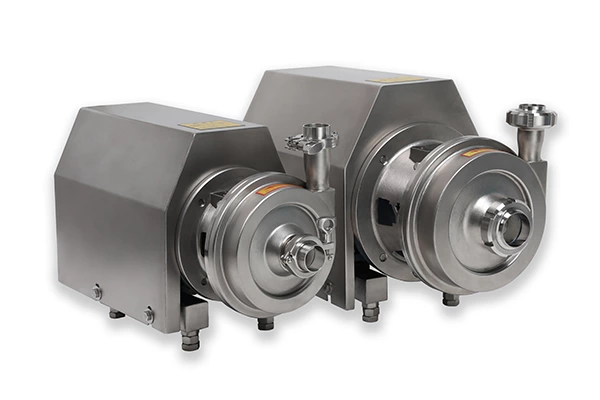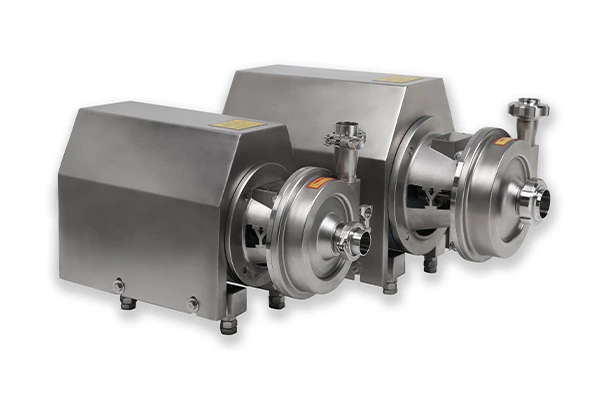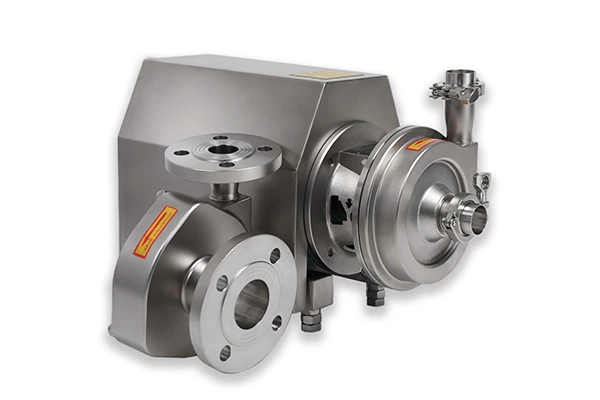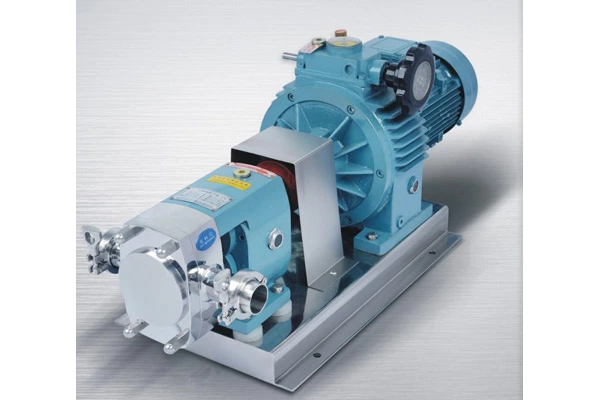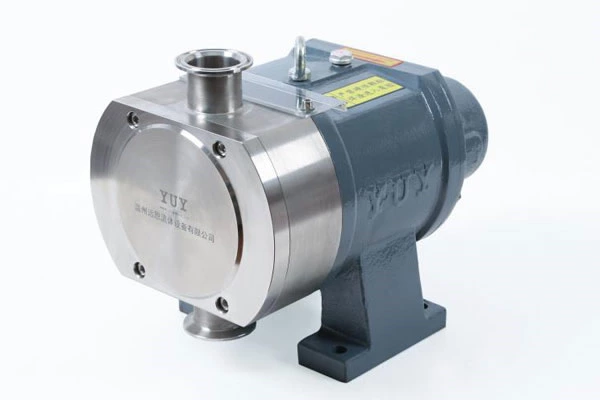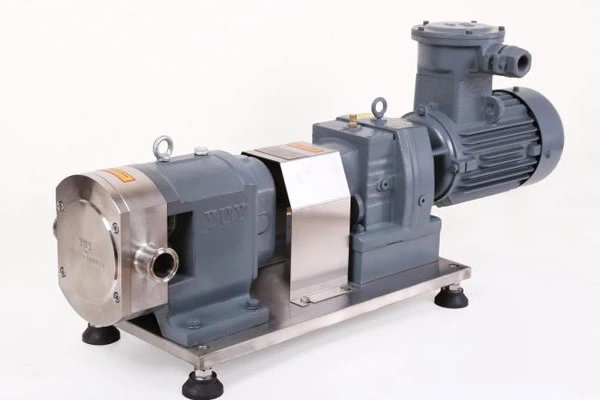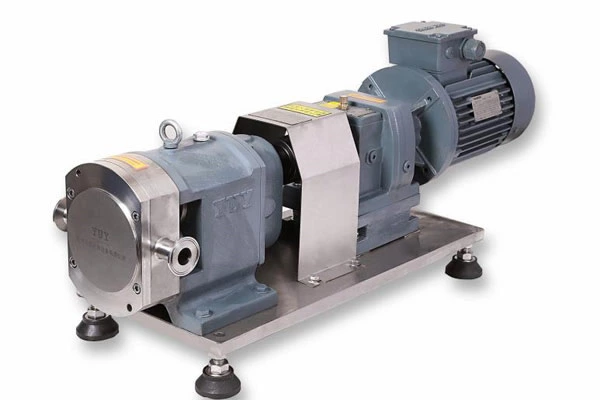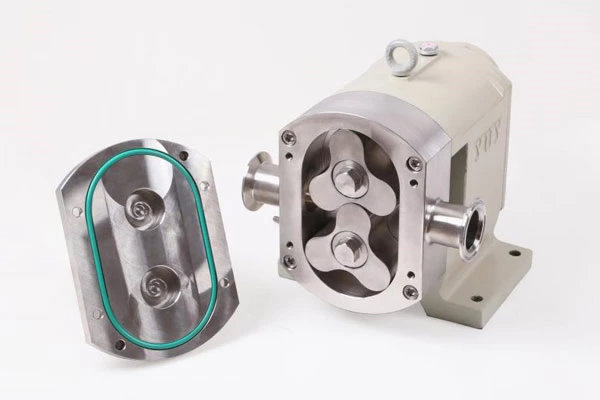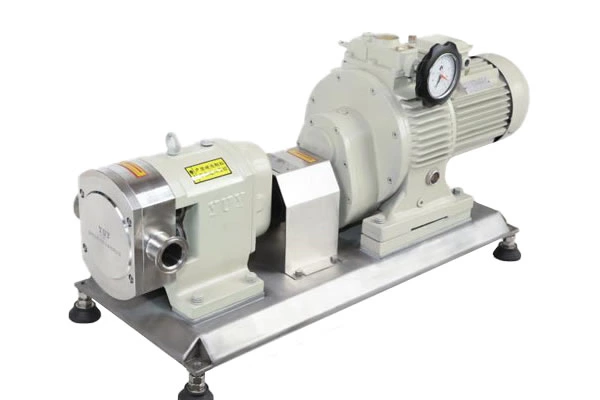Maintenance Methods Of Various Components Of Sanitary Centrifugal Pumps
Sanitary Centrifugal Pump works by using the rotation of the impeller to make the water centrifugal. Before starting the water pump, the pump casing and the suction pipe must be filled with water, and then the motor is started so that the pump shaft drives the impeller and water to rotate at high speed. The water undergoes centrifugal motion and is thrown to the outer edge of the impeller, and flows into the water pressure pipeline of the water pump through the flow channel of the volute pump casing.
1. Inspection method of packing seal
1. Clean the packing box of the sanitary centrifugal pump and check whether there are scratches, burrs, etc. on the surface of the shaft. The stuffing box should be cleaned and the surface of the shaft should be smooth.
2. Check the shaft runout. The imbalance of the rotor runout should be within the allowable range to avoid excessive vibration, which is not good for the packing.
3. Apply sealant or lubricant suitable for the medium to the stuffing box and the surface of the shaft.
4. For the packing packed in rolls, first take a wooden stick with the same size as the shaft neck, wrap the packing around it, and then cut it with a knife. The blade should preferably be 45° inclined.
5. The packing should be loaded one by one, and several should not be loaded at a time. The method is to take a packing, apply lubricant, hold one end of the packing interface with both hands, pull it apart axially to make it spiral, and then insert it into the shaft neck from the cutout. Do not pull it apart radially to avoid uneven interfaces.
6. Take a metal sleeve of the same size and material as the packing box or with a lower hardness than the shaft, push the packing into the deep part of the box, and use a gland to apply a certain pressure to the sleeve to pre-compress the packing. The pre-compression amount is 5%~10%, and the maximum is 20%. Turn the shaft one circle again and remove the sleeve.
7. Use the same method to load the second and third packings. Note that when the number of packings is 4~8, the interfaces should be staggered 90° when loading; two packings should be staggered 180°; 3~6 packings should be staggered 120° to prevent leakage through the interface.
8. After the last packing is loaded, it should be pressed with a gland, but the pressing force should not be too large. At the same time, turn the shaft by hand to make the assembly clamping force tend to parabolic distribution. Then loosen the gland slightly. 9. Perform an operation test. If it cannot be sealed, tighten the packing a little more; if it heats too much, loosen it a little. In this way, it can be officially put into use until it is only leaking in a drip-like manner and the heat is not large (the temperature of the packing part can only be 30-40°C higher than the ambient temperature).
Technical requirements for the assembly of sanitary centrifugal pump packing seals and the installation of packing seals should comply with the provisions of technical documents. If there are no regulations, the following requirements should be met:
1. Check the radial runout of the shaft at the sealing component. The allowable radial runout of the shaft is within the range of 0.03-0.08mm;
2. The diameter gap between the liquid seal ring and the sleeve is generally 1.00-1.50mm, and the diameter gap between the liquid seal ring and the stuffing box is generally 0.15-0.20mm;
3. The diameter gap between the packing gland and the sleeve is generally 0.75-1.00mm, and the gap around should be uniform;
4. The diameter gap between the packing gland and the packing box is generally 0.10~0.30mm;
5. When there is a packing bottom ring, the diameter gap between the bottom ring and the shaft sleeve is generally 0.70~1.00mm;
6. After the packing is tightened, the liquid seal ring inlet hole should be aligned with the liquid seal tube, or the liquid seal ring should be slightly biased to the outside;
7. For packing packed in rolls, first take a wooden stick of the same size as the shaft, wrap the packing around it, and then cut it with a knife. The incision should preferably be a 45° slope. 2. Technical standards for coupling maintenance Small pump couplings mainly include rigid couplings, gear couplings and elastic couplings:
The following are the details:
3. Rigid couplings Rigid couplings are generally used on sanitary centrifugal pumps with lower power. When overhauling, first remove the connecting bolts and rubber elastic rings. For liquids with low temperature, the plane clearance between the two half couplings is 2.2~4.2mm. When the temperature is high, it should be 1.55~2.05mm larger than the shaft drift. The rubber elastic ring of the coupling should be 0.15~0.35mm smaller than the perforation diameter. At the same time, special tools must be used during disassembly and assembly to keep it smooth and no scratches are allowed. 4. Gear couplings Gear couplings have better flexibility and automatic centering performance. During overhaul, the following methods are generally used:
1. Check the meshing of the coupling tooth surface. The contact area along the tooth height is not less than 50%, and along the tooth width is not less than 70%. There should be no serious pitting, wear and cracks on the tooth surface.
2. The full circle runout of the outer gear ring of the coupling is not more than 0.03mm, and the end face runout is not more than 0.02mm.
3. If the gear ring needs to be removed, special tools must be used and it should not be knocked to avoid bending or damaging the shaft. When reinstalling, the gear ring should be heated to about 200℃ before being installed on the shaft. The interference between the outer gear ring and the shaft is generally 0.01~0.03mm.
4. When reinstalling the intermediate sleeve or other components, they should be assembled according to the original markings and data.
5. Tighten the bolts evenly with a torque wrench.
V. Diaphragm elastic coupling
1. Clean and check the surfaces of the two half couplings. There should be no cracks or wear on them. The surface matching the middle spacer should be smooth and free of burrs. The coaxiality deviation of the two half couplings should be less than 0.003mm.
2. Clean and check the spring sheet. There should be no cracks or deformation.
3. Clean and inspect the bolts. The surface should be free of cracks, wear and deformation.
4. Alignment requirements: axial ±0.03mm, radial ±0.05mm.
